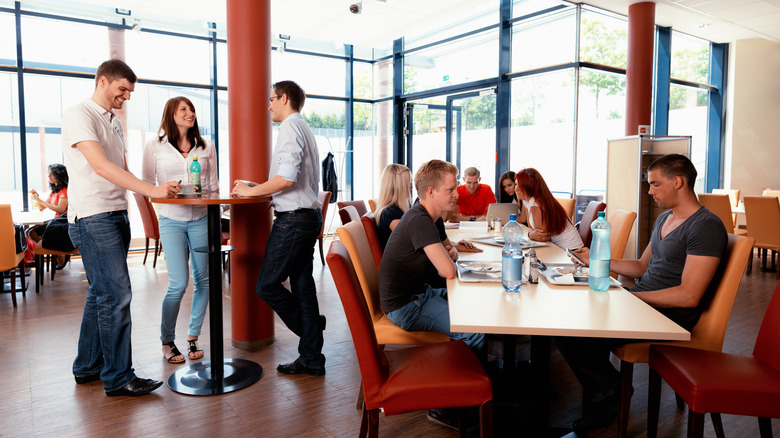Where Rick Steves Goes For Affordable Food And Great Conversation In Europe
With over five decades of travel experience, Rick Steves brings an incredible array of savvy tips and tricks for the road. The travel writer and television host first took off on independent travels across Europe fresh out of high school, all on a shoestring budget. So in equal measure to recommending dining strategies for the most scenic locations, Steves is well-versed in stretching your dollars on the continent. And one of his most unorthodox tips for affordable food involves a place far off of the tourist track: university cafeterias (per Rick Steves).
Here, you can grab well-priced bites, often of local cuisine, and without incurred costs like service charges. Rather than operating for maximized profit, such dining operations typically maintain a fixed price, totally alleviating fears of tourist surcharges. Sure, the food may not always be fit for gourmands, but it's usually fairly nutritious — and a true glimpse into regional dining patterns.
Furthermore — perhaps most intriguingly — the cafeteria lets you mingle with young locals. The majority of European students study English, making educational institutions a hotspot for a common language. And Steves points out that students are often willing to socialize — especially since you'll likely stick out in the surroundings. After all, traveling to eat isn't exclusively about the flavors. An insightful conversation with a resident could leave a more long-lasting impression than a fancy restaurant reservation.
Track down cafeteria style dining for affordable European food
Rick Steves has long promoted a "back door" travel style — diving headfirst into overlooked destinations and experiences. Stray just slightly off the beaten path, and you'll find those inter-cultural connections that materialize travel magic. So push your comfort zone — one of Rick Steves' central dining rules in Europe — and discover the unexpected.
Heading into a foreign cafeteria makes for a terrific candidate. Especially for Americans, the term may draw associations with drab dining — think huge pans of basic meatloaf, casserole, or greasy pizza. However, navigating the experience in Europe makes for a more enthralling experience. Start by tracking down the university campus on a map, likely close by if you're in a European college town. Steves also suggests looking into working canteens, senior centers, or even a church. Once there, navigating such institutions can feel intimidating — even more so when there's a language barrier. Yet learn local greetings, inquire strangers politely, employ a translation app, and you'll receive positive feedback. By breaking the ice in such contexts, you increase the odds of making a local friend.
Last — but not least — there's the food itself. Since cafeterias usually lay out their offerings, you can employ the reliable point and smile method. Try out something new; it might just become a new favorite comfort food. Often priced under $5, even if a European cafeteria meal isn't for you, the experience is worth a shot.


